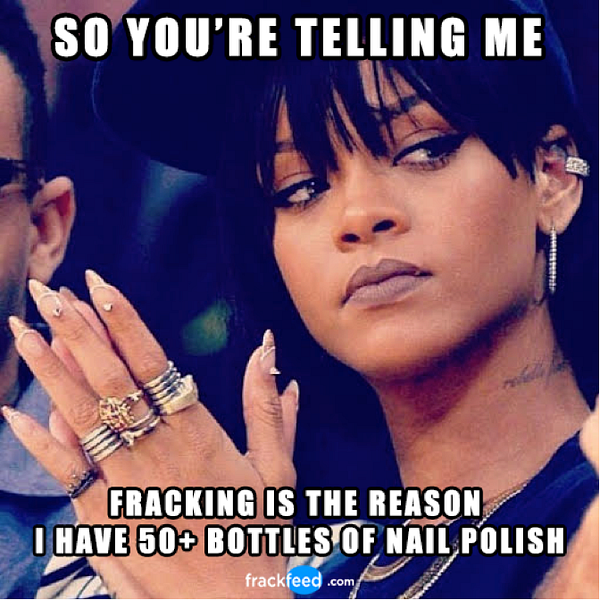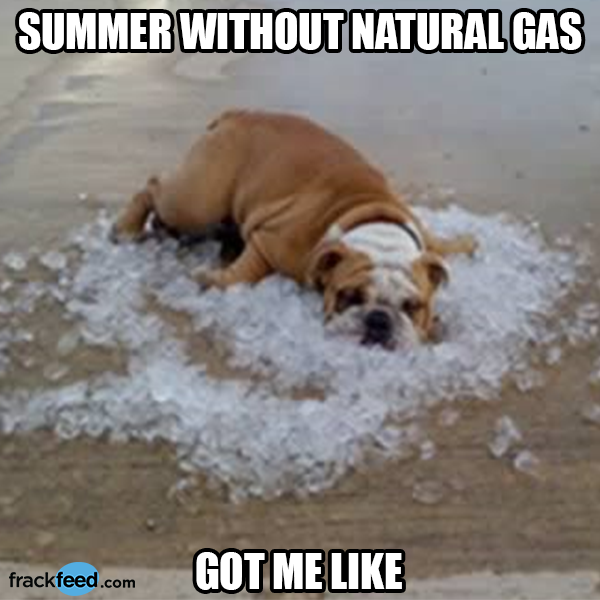we can't wait to help you...

Take the website’s “meme gallery,” which is prominently displayed at the center of the home page: At first glance, all seems in order, if slightly dated. There are images of both Rihanna looking casually perturbed and somebody in a Photoshopped houndstooth “Scumbag Hat” — common online fodder. But then you actually read the text.


This isn’t just another listicle-loving, meme-peddling blog; there’s an agenda here and it’s not exactly subtle. Welcome to the eight-month-old siteFrackFeed run by Harris Media, a public affairs firm headed by Republican strategist Vincent Harris. The 28-year-old has contributed to digital outreach for Rick Perry, Newt Gingrich, Ted Cruz, Rand Paul, and — for an incredibly brief moment — Donald Trump. He developed FrackFeed for North Texans for Natural Gas, a group funded by four local energy companies that would very much like to influence the public’s opinion of fracking.
Tasked with making a normally mundane energy issue (one fraught with ethical environmental issues) interesting to a younger audience, Harris turned to a site whose name is essentially synonymous with viral content. “The way that BuzzFeed produces content, that’s how the internet works,” Harris told me. “The internet works in memes and pithy quotes and fun entertainment content. Especially with issues that could be more mundane, like fracking — if you’re not saying it in an interesting, entertaining way, people will go watch a cat GIF or a squirrel on a ski or something.”
Harris is not the first political mind who has mimicked BuzzFeed’s successful model for reaching a younger generation. Both Republicans and Democrats have deployed memes like shruggy or doge as ways to make political points or criticize their opponents. (Some attempts have been more elegantly executed than others, but almost all have immediately killed the meme in question.) Back in 2013, the National Republican Congressional Committee studied BuzzFeed’s site and layout to understand how best to redesign its own, the result of which contained posts including “13 Animals That Are Really Bummed on Obamacare’s Third Birthday.” In June, Hillary Clinton’s campaign launched a “millennial engagement” program that targeted voters younger than 35. (Even her site is not above a ridiculous listicle).
Though energy companies like Shell can always advertise in the form of sponsored BuzzFeed posts, FrackFeed may be the first single-issue website that is regularly updated with content based in pop culture and current events. According to Harris, fracking-related memes, videos, and listicles are typically generated via weekly calls and chain emails among members of his firm and FTI Consulting (a communications company well-known for crisis management), similar to how an editorial board might plan coverage. “There’s a daily banter about what’s in the news, whether it’s coming from someone at one of the energy companies, or from someone at our company,” Harris said. (Animal memes resonate most with his energy clients, and Harris himself is particularly fond of a video that features two hippos in a puddle that calls “fractivists” “hippo-critical.”)
These efforts have paid off. Harris claims FrackFeed has the lowest bounce-rate — the percentage of people who click away from a website after viewing only one page — of the 1,000 websites that Harris estimates that he has created. FrackFeed has been able to reach a much younger audience than any of the other projects Harris has led to promote natural gas drilling.
“It is the young people that are really loving FrackFeed content,” he said. “It’s the young people that love the BuzzFeed-ification of this issue”

Recently, Harris held a “no-electronics” meeting at his Austin office, which he called an ideation session — a Silicon Valley–approved brainstorming process that he learned when he visited Google’s San Francisco campus. The gathering began with an exercise that encouraged employees to think outside the box, with everyone — strategists, graphic designers, developers, advertising specialists — folding paper planes with their dominant hands behind their backs, then throwing them out of the office to see whose would fly farthest. Afterward, the team went inside to generate ideas for the site.
“We spent the next 90 minutes brainstorming memes, videos, website ideas, social ideas,” he said. “We wrote them on our glass panels. We had nice food there. That led to maybe a month’s worth of content.”
The fruits of that labor included a video that capitalizes on the buzz of the election, in which a woman named Fracking announces her candidacy for president. (A major theme of the site this week is to anthropomorphize Fracking as a person who is running for president.) Other ideas included upcoming Game of Thrones–related content and packages playing off the upcoming Rio Olympics. Though Harris doesn’t want to give too much away, he says the Olympics presents the ideal opportunity to sneak in some messaging about the benefits of deep-earth drilling.
“People are going to be talking about all kinds of sports, they’re going to be talking about Rio,” Harris said. “How can we insert the message of fracking and natural gas industry into the conversation?” Somehow, I’m sure he’ll find a way.